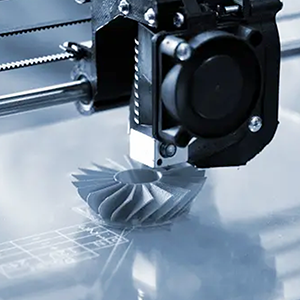What impact does 3D Printing have on manufacturing? As a manufacturer, YJC Polymer will discuss this issue with you.
3D printers revolutionize the manufacturing process by crafting parts from three-dimensional models, which are mathematical representations of surfaces generated using computer-aided design (CAD) software or derived from 3D scan data. These designs are exported as STL or OBJ files compatible with print preparation software.
Each 3D printer comes equipped with software to define print settings and slice the digital model into layers representing horizontal cross-sections of the part. Adjustable parameters include orientation, support structures, layer height, and material. Once configuration is complete, the instructions are transmitted to the printer via a wireless or cable connection.
Various 3D printers employ different techniques for part fabrication. Some use lasers to cure liquid resin into hardened plastic, while others fuse polymer powder particles at high temperatures. Most printers operate autonomously until the print job is finished, and modern systems automatically replenish material from cartridges as needed.
Among the established 3D printing technologies for plastic parts are stereolithography (SLA), selective laser sintering (SLS), and fused deposition modeling (FDM). SLA and SLS are particularly favored in professional settings for their precision and versatility.
Stereolithography (SLA), the pioneering 3D printing technology, employs lasers to solidify liquid resin, producing highly accurate and watertight prototypes and parts across various industries.
Selective laser sintering (SLS) utilizes high-power lasers to fuse polymer powder particles, yielding durable parts ideal for functional prototypes and end-use products. This method is renowned for its ability to handle complex geometries with ease.
Fused deposition modeling (FDM), also known as fused filament fabrication (FFF), is widely utilized at the consumer level. It extrudes thermoplastic filaments layer by layer to create parts, making it suitable for rapid prototyping and basic proof-of-concept models.
Each 3D printing process has its advantages and limitations, making it crucial to select the appropriate technology based on specific requirements. Factors such as speed, cost, and design freedom play pivotal roles in this decision-making process.
The benefits of 3D printing extend beyond traditional manufacturing methods. Speed is significantly enhanced, with CAD models transformed into physical parts within hours. Cost-effectiveness is another advantage, as 3D printing eliminates the need for expensive tooling and setup associated with conventional techniques.
Customization is revolutionized by 3D printing, allowing products to be tailored to individual specifications without additional tooling costs. This flexibility opens new avenues for mass customization across various industries.
Furthermore, 3D printing offers unparalleled design freedom, enabling the creation of intricate shapes and parts that were previously impractical or impossible to manufacture. This versatility paves the way for innovation in design and engineering, unlocking new possibilities for product development.
In conclusion, 3D printing represents a paradigm shift in manufacturing, offering speed, cost-effectiveness, customization, and design freedom. As this transformative technology continues to evolve and become more accessible, its impact across industries will undoubtedly be profound.


Our 3D printing services allow you to 3D print your custom parts on demand. Our team specializes in 3D printing and consists of skilled mechanical engineers, reverse engineers, CNC engineers, prototype craftsmen, screen printing technicians, and surface treatment engineers. Our state-of-the-art facility houses two 3D printers (SLA Laser Rapid Prototyping), six CNC machining centers, UV machines, ovens and other specialized spray equipment. We also offer spray painting, screen printing, pad printing, and other ancillary equipment.